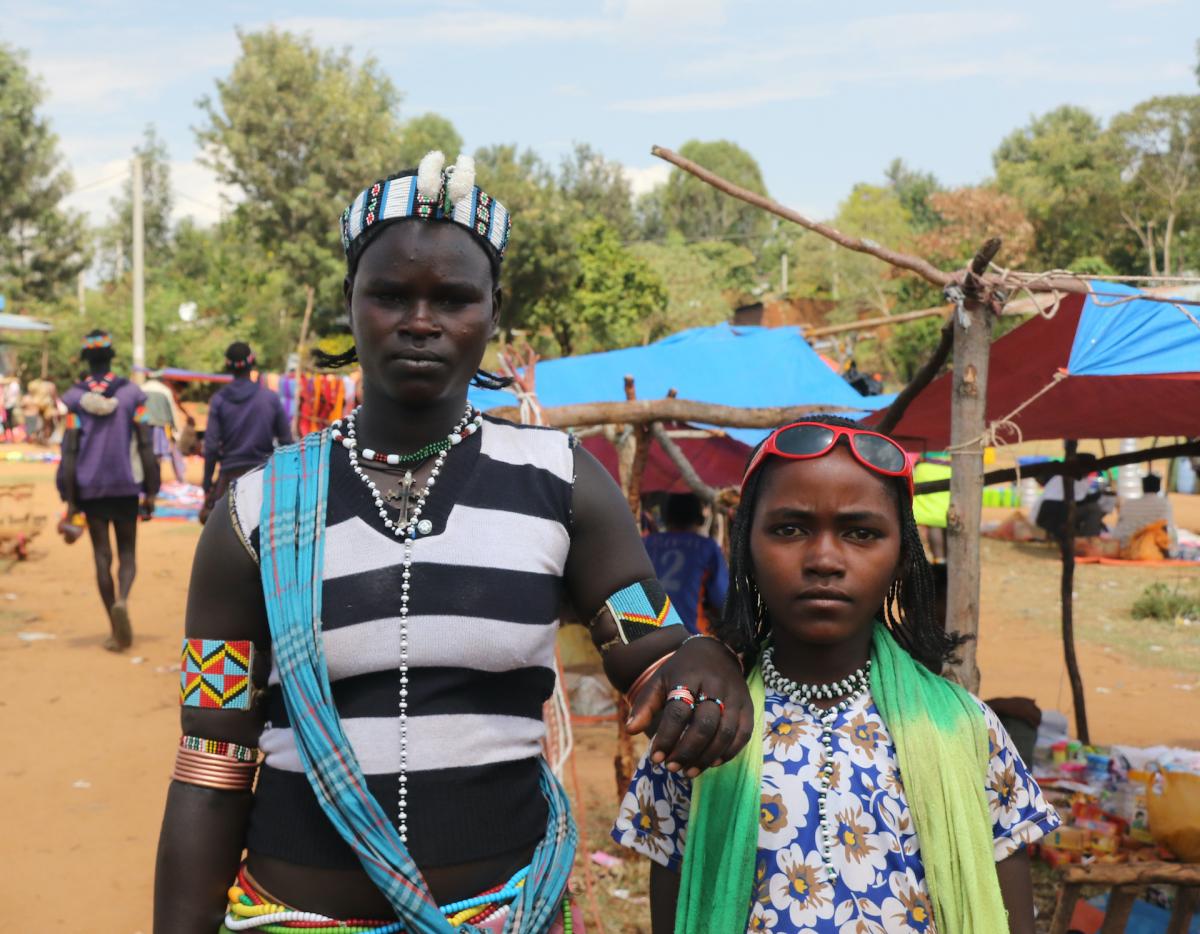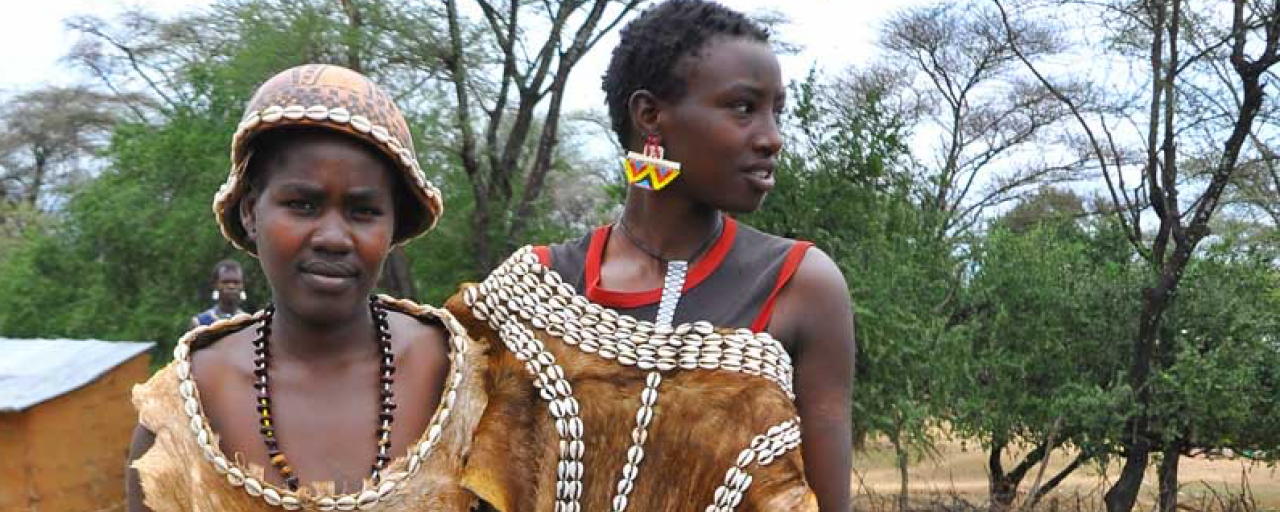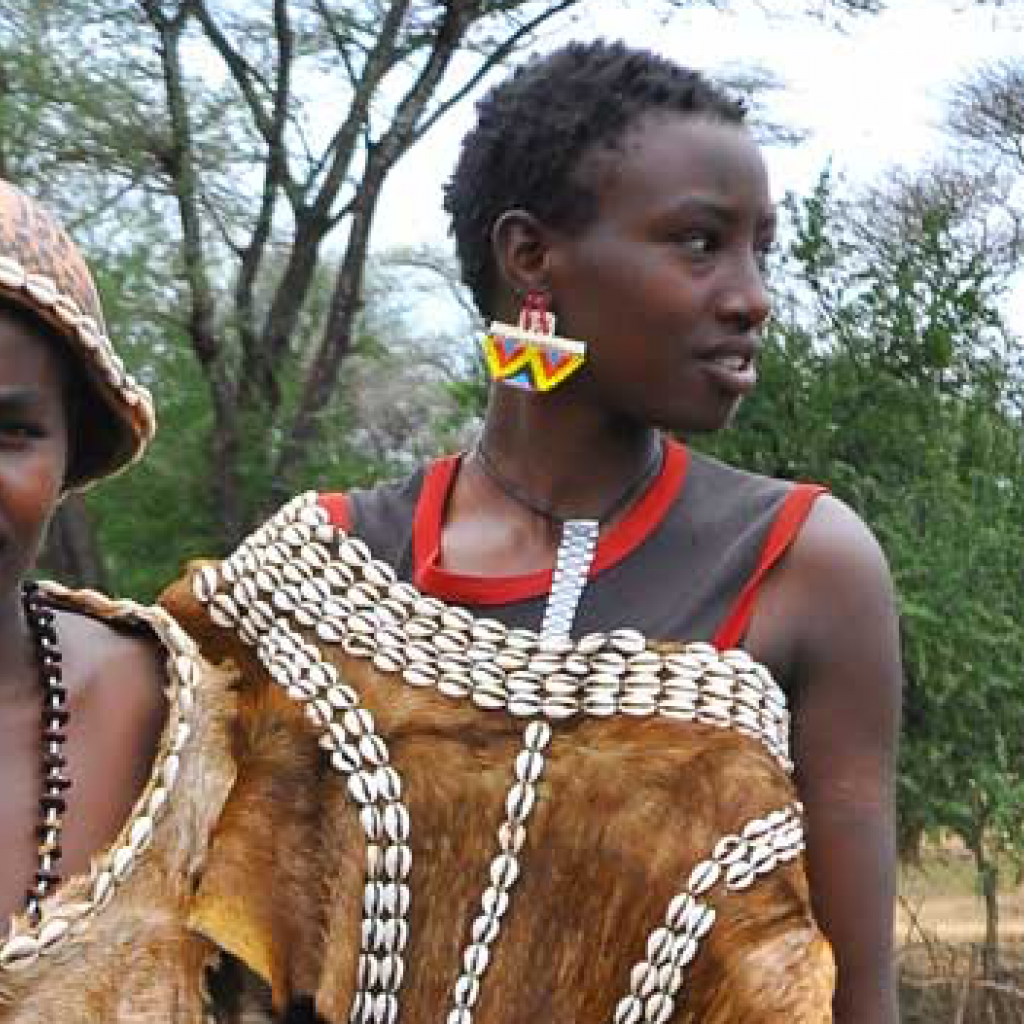The Tsemay inhabit the territory of the Omo Valley in Ethiopia, that extends along the Western bank of the Weito river, that in the Tsemay language is called Dulaika, an arid region characterized by a torrid climate.
Among the ethnic groups present in the Omo Valley, the Tsemay are one of the smallest, the Tsemay population in fact does not exceed 5,000 people; they speak a homotic language with influences from the Eastern Cushitic language, that is closely related to that spoken by the Konso.
The Tsemay, also known as Tsamai, are mainly breeders and cattle are the main source of livelihood; but they also practice agriculture by taking advantage of the periodic floods of the river, the Tsemay mainly cultivate sorghum and corn and, sometimes, cotton on the banks of the Weito river that, during the rainy season, overflows by depositing a layer of fertile silt.
As well as the Banna, the Tsemay are skilled honey pickers, both wild and using hives that are placed near the villages.
Unlike any other Ethiopian population, for the Tsemay sexual freedom before marriage is accepted and marriages are organized by the bride's parents, they decide who she will marry, with or without the girl's consent.
Female virginity lost before marriage is not a taboo, a Tsemay girl, if she wishes, can have a sexual partner with whom she can maintain premarital relationships, while it is absolutely forbidden to have children from relationships outside of marriage.
Before they can get married, the boys must pass the ritual of transition to adulthood, the Bull’s jumping, the same ritual that is also practiced by the Hamer, the Kara and the Banna; this ritual requires that the initiator jumps several times running on the back of some bulls positioned next to one another without ever falling.
Once the ritual of the Bull’s jump is passed, the initiate is given a leather band decorated with feathers, that testifies his new status and he is ready to build his new family.
The boy who wishes to marry must obtain the goods to pay his future wife to his family of origin; the payment consists of cattle, honey, wheat and coffee beans; however it is not so simple for a boy to put together the goods to bring to the bride's family.
Usually the family of the future spouse helps the boy to pay the sum due; the bride's price will only benefit the girl's family by way of reimbursement for the girl's future failure to work.
If the bride's parents accept the goods and give their approval, the groom's parents become responsible for preparing the wedding party.
During the wedding ceremony, the bride and groom shave and sprinkle their heads with butter, after the ceremony the new couple is officially married and for the next six months is not required to work; in this period the two spouses can eat together, while for the rest of their married life this is no longer allowed.
The Tsemay society is polygamous and follows the paternal line, marriages between people closely linked by kinship bonds are prohibited while marriage with the Hamer and the Banna is allowed, in the latter case it is the Tsemay woman who marries a Banna man, never the opposite.
Furthermore, the Tsemay society is structured on the basis of an age group system; there are four age groups, and the transition to the next age group occurs every 10 years, in correspondence with when a new generation of boys, aged between 11 and 22 years, practice the Bull’s jump and go to the first adult stage of their life.
For Tsemay jewelry is very important: men wear bracelets, necklaces and headbands, made with colored beads; women also wear numerous accessories, moreover their clothing is richly decorated with beads and shells.
The Tsemay women's clothing identifies their social status: the girls who are not yet married wear a short leather skirt with a sort of V-shaped apron, always in leather, in the back that reaches the ground, also they wear a large collar made of leather and decorated with pearls and cowrie shells; while married women wear a long leather skirt that covers the legs in front and behind.
Women's hairstyles also identify their social status: unmarried girls have short hair, often colored in red and folded over their ears; while married women have long hair styled in braids kneaded with butter and red earth and cover the neck leaning on the shoulders.




